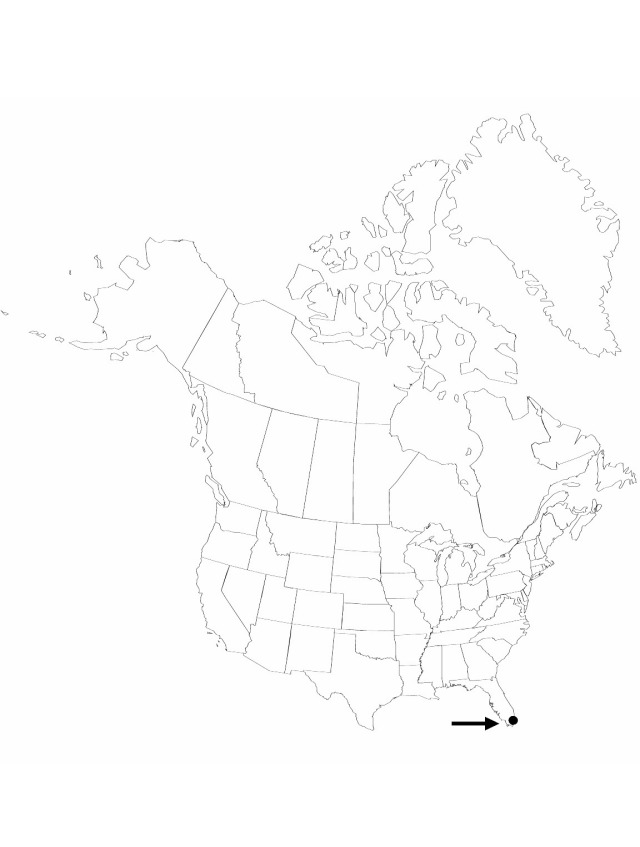Difference between revisions of "Elaeis guineensis"
Selectarum Stirpium Americanarum Historia... 280, plate; 172. 1763.
FNA>Volume Importer |
imported>Volume Importer |
||
| (3 intermediate revisions by 2 users not shown) | |||
| Line 8: | Line 8: | ||
}} | }} | ||
|common_names=African oil palm;palmier à huile d’Afrique | |common_names=African oil palm;palmier à huile d’Afrique | ||
| + | |special_status={{Treatment/ID/Special_status | ||
| + | |code=I | ||
| + | |label=Introduced | ||
| + | }}{{Treatment/ID/Special_status | ||
| + | |code=F | ||
| + | |label=Illustrated | ||
| + | }} | ||
|basionyms= | |basionyms= | ||
|synonyms= | |synonyms= | ||
| Line 24: | Line 31: | ||
|elevation=0–10 m | |elevation=0–10 m | ||
|distribution=Fla.;native;to Africa. | |distribution=Fla.;native;to Africa. | ||
| + | |introduced=true | ||
|discussion=<p><i>Elaeis guineensis</i> is widespread in wet tropical Africa. It is now cultivated throughout the tropics, where it is the most important perennial oil crop, the source of both palm oil and palm kernel oil. E.laeis guineensis has escaped in the vicinity of Miami, Florida, and may be counted as an element of the flora. Birds and small mammals eat the oil fruits and disperse the seeds. Juveniles are easily recognized by the very sharp, spinescent remains of leaf segment midribs at the base of each leaf.</p> | |discussion=<p><i>Elaeis guineensis</i> is widespread in wet tropical Africa. It is now cultivated throughout the tropics, where it is the most important perennial oil crop, the source of both palm oil and palm kernel oil. E.laeis guineensis has escaped in the vicinity of Miami, Florida, and may be counted as an element of the flora. Birds and small mammals eat the oil fruits and disperse the seeds. Juveniles are easily recognized by the very sharp, spinescent remains of leaf segment midribs at the base of each leaf.</p> | ||
|tables= | |tables= | ||
| Line 33: | Line 41: | ||
-->{{#Taxon: | -->{{#Taxon: | ||
name=Elaeis guineensis | name=Elaeis guineensis | ||
| − | |||
|authority=Jacquin | |authority=Jacquin | ||
|rank=species | |rank=species | ||
| Line 48: | Line 55: | ||
|publication title=Selectarum Stirpium Americanarum Historia... | |publication title=Selectarum Stirpium Americanarum Historia... | ||
|publication year=1763 | |publication year=1763 | ||
| − | |special status= | + | |special status=Introduced;Illustrated |
| − | |source xml=https:// | + | |source xml=https://bitbucket.org/aafc-mbb/fna-data-curation/src/2e0870ddd59836b60bcf96646a41e87ea5a5943a/coarse_grained_fna_xml/V22/V22_149.xml |
|subfamily=Arecaceae subfam. Arecoideae | |subfamily=Arecaceae subfam. Arecoideae | ||
|tribe=Arecaceae tribe Cocoeae | |tribe=Arecaceae tribe Cocoeae | ||
Latest revision as of 20:29, 5 November 2020
Leaves up to 8 m; segments ca. 120 cm. Fruits ca. 4 cm; ripening from green to yellow to red or black, 4 cm; endocarp black, 3-sided, bearing 3 germination pores. 2n = 32.
Phenology: Flowering spring-- through summer.
Habitat: Moist organic soil over limestone in mesic hammocks and disturbed wooded areas
Elevation: 0–10 m
Distribution

Introduced; Fla., native, to Africa.
Discussion
Elaeis guineensis is widespread in wet tropical Africa. It is now cultivated throughout the tropics, where it is the most important perennial oil crop, the source of both palm oil and palm kernel oil. E.laeis guineensis has escaped in the vicinity of Miami, Florida, and may be counted as an element of the flora. Birds and small mammals eat the oil fruits and disperse the seeds. Juveniles are easily recognized by the very sharp, spinescent remains of leaf segment midribs at the base of each leaf.
Selected References
None.
